Beyond the enigmatic Dr. Laszlo Kreizler, the character that appears to intrigue readers of the Alienist books the most is the brave, independent, and feisty police secretary turned private investigator, Miss Sara Howard. Although we have yet to learn Sara’s complete background story, I thought it might be interesting to devote a blog series to examining her character more thoroughly based on the information we have been provided with thus far. Was the derringer-toting Sara Howard’s unique brand of feminism appropriate for the time period in which the books are set? What educational and career opportunities would a real Sara Howard have had during the late 19th century?
As we currently lack adequate detail about Sara’s background to overview her particular education and career choices as intended in the books, the present discussion will focus instead on what I am terming a “hypothetical” Sara. Specifically, throughout this blog series I will be examining the kind of upbringing, education, and career choices a young woman born in a similar decade and socioeconomic group to Sara would have had available to her in the late 19th century. Today’s post in the series will focus on our hypothetical Sara’s historical context, particularly the notion of the “woman’s sphere”, an ideology that pervaded upper- and middle-class American culture throughout the 19th century.
The Woman’s Sphere in 19th Century America
The Alienist, Chapter 5:
Back in the early seventies, when I was in my teens, [Sara’s] family moved into a house near ours on Gramercy Park, and I’d subsequently watched her spend her single-digit years turning that decorous neighborhood into her private rumpus room.
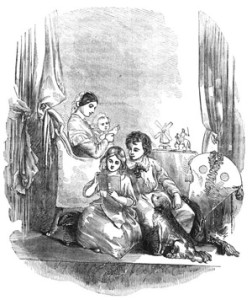 As indicated by John Moore’s quote above, in order to fit the timeline put forward in the Alienist books, our hypothetical Sara Howard would have been born in approximately the mid- to late-1860s. This period immediately following the Civil War was a time of great upheaval for women’s roles in American society. During the latter half of the 18th century and the first half of the 19th century, the idea that men and women should rightly function in two separate “spheres” was a core tenant of American thinking. Although women had been considered inherently inferior to men for centuries leading up to this point, with women holding no legal rights to property or legal standing in society, the agricultural nature of early America had made labor equality within most households a necessity. Despite holding subservient positions in the household, wives and daughters were considered an integral part of family farming and cottage industry businesses. They frequently learned crafts from husbands and fathers, and were often capable of carrying on alone if necessity required. However, societal changes resulting from the rise of the Industrial Revolution prompted a dramatic shift in the American home that changed women’s roles dramatically in the latter half of the 18th century.
As indicated by John Moore’s quote above, in order to fit the timeline put forward in the Alienist books, our hypothetical Sara Howard would have been born in approximately the mid- to late-1860s. This period immediately following the Civil War was a time of great upheaval for women’s roles in American society. During the latter half of the 18th century and the first half of the 19th century, the idea that men and women should rightly function in two separate “spheres” was a core tenant of American thinking. Although women had been considered inherently inferior to men for centuries leading up to this point, with women holding no legal rights to property or legal standing in society, the agricultural nature of early America had made labor equality within most households a necessity. Despite holding subservient positions in the household, wives and daughters were considered an integral part of family farming and cottage industry businesses. They frequently learned crafts from husbands and fathers, and were often capable of carrying on alone if necessity required. However, societal changes resulting from the rise of the Industrial Revolution prompted a dramatic shift in the American home that changed women’s roles dramatically in the latter half of the 18th century.
Instead of households or small shops producing custom goods for small self-sustaining agricultural communities, mass production of goods through factories changed living and working conditions throughout the country. Money was now the primary means of obtaining basic commodities, and it became increasingly important for men in the household to take on the role of “bread winner” by working outside the home in the newly established commercial world to earn money for the family’s survival. With the rise of this new capitalism, a woman’s role in her household had evolved from equal contributor in the family business to that of a homemaker, and her most important responsibilities had been reduced to those requiring the “feminine” traits of patience, nurturing, and altruism: the raising of children and the care of her husband. The male sphere of the commercial world outside the home, on the other hand, was viewed as an aggressive, competitive domain that required men to act in less than virtuous ways in order to get ahead, and consequently the idealisation of women — or, more specifically, of wives and mothers — in writings of the day was prevalent. The image we have today of the docile, submissive, and loving Victorian wife who soothed her husband’s cares in the evening and instilled her children with good Christian moral values throughout the day originates from this period.
“A Woman is Nobody. A Wife is Everything.”
As a result, motherhood in the early- to mid-19th century was viewed as the most powerful means by which a woman could influence the world, and the female role as nurturer took on a vital role in society. Wives and mothers were perceived as “untainted by the corrupt world” and could therefore influence their children away from the “male sinfulness” of the commercial world as well as providing their husbands with a “source of comfort and the spring of joy”. Given this heavy moral burden, it is unsurprising that women who could not, or chose not to, perform the role of wife or mother were seen as letting down her family along with the nation as a whole. Mrs. A. J. Graves, the author of Woman in America (1855) emphatically stated that a women’s “domestic duties have a paramount claim over everything else upon her attention — that home is her appropriate sphere of action; and that whenever she neglects these duties, or goes out of this sphere of action to mingle in any of the great public movements of the day, she is deserting the station which God and nature have assigned to her. She can operate far more efficiently in promoting the great interests of humanity by supervising her own household than in any other way.”
Despite the perception that the 19th century wife and mother was man’s moral superior, she remained subservient to her husband in every other respect. Women could not sign contracts, own or inherit property, or have any claim to children in the event of separation. Wives were, in fact, the property of their husbands, and marriage was therefore not a union between equals but a union between master and subordinate. Perhaps the most respectable trait a woman could possess in this period was that of self-abdication. As described in A Separate Sphere (2003), “Her life was structured by the needs of others, and she was fulfilled through acts of service. The ideal woman was expected to set aside all consideration of herself; her joy would be manifested in the gratification of others. Her work was that of pure affection, with no expectation of reward and no ambition.” It should be noted that although the women’s sphere ideology was pervasive throughout American society during the 19th century, it was primarily upper- and middle-class Northeastern white women, such as our hypothetical Sara Howard, who were most directly affected. Women from poorer backgrounds had little choice but to enter the workforce alongside male family members in order to survive.
The Women’s Rights Movement and the Civil War
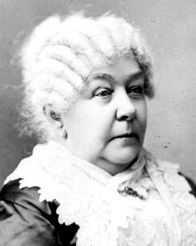 The rise of the antislavery movement provided the first greatest impetus for change in women’s rights during the 19th century. The first Women’s Rights Convention, organised by Elizabeth Cady Stanton (who received a cameo in The Angel of Darkness) and Lucretia Mott along with three other women, was held in Seneca Falls, New York, in 1848. Many of the attendees were abolitionists who found that their causes were connected by a joint desire for freedom and equality. At the convention, a Declaration of Sentiments based on the Declaration of Independence was put forth (“We hold these truths to be self evident; that all men and women are created equal…”) that was signed by sixty-eight women and thirty-two men. Although true equality — the right to vote — would not be realised until the 20th century, the movement gained momentum throughout the 19th century and progress was made with married women granted property rights, the right to keep all her own earnings, and to retain custody over her children passed in 1860 by the New York legislature. Other states passed similar legislation soon afterward.
The rise of the antislavery movement provided the first greatest impetus for change in women’s rights during the 19th century. The first Women’s Rights Convention, organised by Elizabeth Cady Stanton (who received a cameo in The Angel of Darkness) and Lucretia Mott along with three other women, was held in Seneca Falls, New York, in 1848. Many of the attendees were abolitionists who found that their causes were connected by a joint desire for freedom and equality. At the convention, a Declaration of Sentiments based on the Declaration of Independence was put forth (“We hold these truths to be self evident; that all men and women are created equal…”) that was signed by sixty-eight women and thirty-two men. Although true equality — the right to vote — would not be realised until the 20th century, the movement gained momentum throughout the 19th century and progress was made with married women granted property rights, the right to keep all her own earnings, and to retain custody over her children passed in 1860 by the New York legislature. Other states passed similar legislation soon afterward.
The advent of the Civil War that followed shortly after the rise of the women’s rights movement prompted change on a more practical level. With husbands, fathers, brothers, and sons required on the battlefield or lost during conflict, women needed to move beyond their sphere of domesticity into the workforce. Depending on their level of education and socioeconomic group, women were required to take up where the men in their lives had left off. Between 1850 and 1870, census records indicate that over ninety-seven thousand women had taken up work in factories, and women were also starting to gain employment as retail clerks, secretaries, and civil servants. Sewing, domestic service, nursing, and teaching had been acceptable female occupations for those financially compelled to work from the early 19th century, but women were now starting to enter the professions in greater numbers than ever before.
This increased presence of women in the workforce, particularly in the fields of teaching and nursing, necessitated that changes be made to women’s education during the late 19th century, and these changes allowed young women such as our hypothetical Sara to make the final leap into the male dominated professional world, achieving independence once and for all.
The Quest for Education
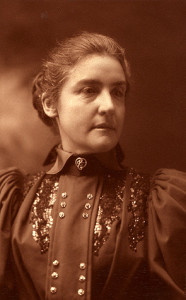 Although basic education had been provided to young girls prior to the mid-19th century, too much education — and certainly higher education — had been considered detrimental. By denying females the same educational opportunities as males, it made it easier for young women to conform to their prescribed roles in society. However, with changing needs brought about by the war, along with the rise of the women’s rights movement, young women were beginning to be provided with new educational opportunities in the latter half of the 19th century when our hypothetical Sara would have been growing up. Universities and colleges in the Midwest had started to open their doors to females, although only for specific degrees that would help prepare young women for marriage or the acceptable female occupations of teaching and nursing. In the Northeast where our hypothetical Sara would have been located, women’s colleges such as Vassar and Smith that offered more rigorous programs of higher education had also opened.
Although basic education had been provided to young girls prior to the mid-19th century, too much education — and certainly higher education — had been considered detrimental. By denying females the same educational opportunities as males, it made it easier for young women to conform to their prescribed roles in society. However, with changing needs brought about by the war, along with the rise of the women’s rights movement, young women were beginning to be provided with new educational opportunities in the latter half of the 19th century when our hypothetical Sara would have been growing up. Universities and colleges in the Midwest had started to open their doors to females, although only for specific degrees that would help prepare young women for marriage or the acceptable female occupations of teaching and nursing. In the Northeast where our hypothetical Sara would have been located, women’s colleges such as Vassar and Smith that offered more rigorous programs of higher education had also opened.
Nevertheless, these advances did not proceed unopposed. Women’s minds had been considered grossly inferior to men’s for centuries. It was widely accepted that a women’s reproductive organs exerted enormous control over her entire being, and the female brain was thought to be smaller, less developed, and operate at a lower level than the male brain. Women were perceived as irrational, intuitive, emotional beings that operated from the heart (or, perhaps, the womb) rather than employing their intellect. A hugely popular 1873 book by former Harvard medical school professor, Dr. Edward H. Clarke, entitled Sex in Education warned that post-puberty education was detrimental for female development. Clarke suggested that women should study one-third less than males and not at all during menstruation otherwise they would risk developing “monstrous brains and puny bodies; abnormally active cerebration and abnormally weak digestion; flowing thought and constipated bowels.” The claims were ludicrous but appealed to popular thought. The book went through seventeen editions in thirteen years, and two hundred copies sold in one day at the University of Michigan when it was released; women had already been studying at the institution for three years.
Given this environment, it should be unsurprising that higher education for females was seen as a great experiment in the late 19th century, and even bright, ambitious young women had fears about their potential in the intellectual arena. M. Carey Thomas who would go on to become president of Bryn Mawr College claimed that she had desired to pursue her intellectual ambitions “above all things” when she was growing up, but fears over her limitations as a female had concerned her: “I was always wondering whether it could be really true, as everyone thought, that boys were cleverer than girls.” Even so, higher education had begun to be seen as a symbol of status in late 19th century America and therefore provided a means for furthering familial ambition. For families that had no sons (as in our hypothetical Sara’s case), or were working their way up the middle-class ladder, sending daughters to college prior to their marriage was perceived as respectable and even desirable. The typical Northeastern female college graduate had a mother who had been unusually well-educated for her time and a professional father who recognised the economic, intellectual, and cultural advantages higher education could bring, and valued personal advancement. As we know that Sara Howard was the only child of an affluent father, we can see that she fit this model perfectly and would therefore go on to live the life of one of the newly emerging class of college educated women who strove for independence in the 1890s.
To Be Continued
Hopefully today’s post has provided an adequate introduction to the changing roles of females in American society that young women such as Sara Howard would have been exposed to in their youth. The late 19th century was a time of change and upheaval for women, with many individuals, including other women, still clinging onto the ideology of the woman’s sphere, while others forged ahead to try to create a more equal society. As indicated earlier, the blog posts that follow will overview what it would have been like for a young woman from Sara’s socioeconomic group to grow up in New York City and the Hudson Valley, as well as overviewing the specific educational opportunities and career choices available to her at the time.
Sources
- Amneus, C. (2003). A Separate Sphere: Dressmakers in Cincinnati’s Golden Age, 1877-1922 ; with essays by Anne Bissonnette, Marla R. Miller, and Shirley Teresa Wajda. Texas, United States: Texas Tech University Press.
- Burns, K., & Barnes, P. (1999). Not for Ourselves Alone — The Story of Elizabeth Cady Stanton & Susan B. Anthony [Film]. United States: PBS.
- Scarborough, E., & Furumoto, L. (1989). Untold Lives: The First Generation of American Women Psychologists. New York, NY, United States: Columbia University Press.
- Schwager, S. (1987). Educating women in America. Signs, 12(2), 333-372.

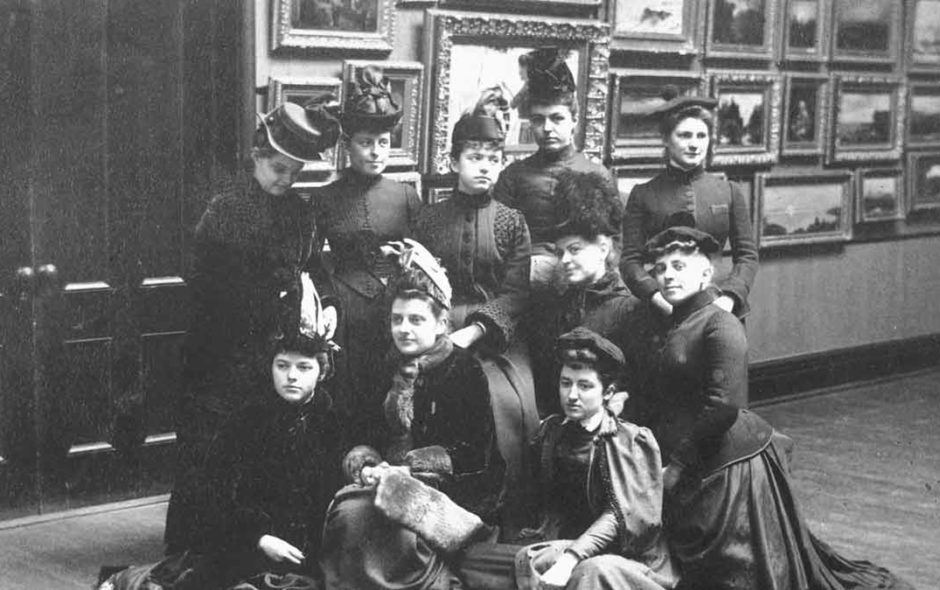


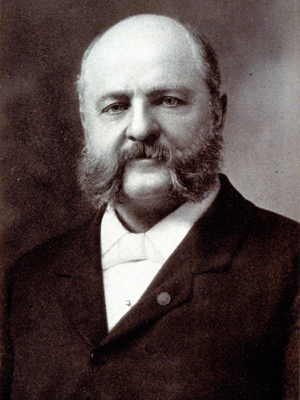
In high school, I hated History class. The subject is presented in the form of bland memorization of battle dates and Presidential terms. Very little detail, background, or context with what else was going on in the rest of the world. Several historical fiction authors, including Caleb Carr, Bernard Cornwell, and Sharon Kay Penman caused me to research the history behind the books. I found, to my delight, that History can be fascinating and can shed light on why many modern things are the way they are, having been shaped by the past. In high school, the only thing I knew about Theodore Roosevelt was that he charged up “some hill somewhere”, said “bully” a lot, and wore round glasses. The only thing I knew about European Royalty was that England had 8 Henrys, France Had some Louis’s and Ferdinand & Isabella sent Christopher to search for a western route to India and found America. Thank you, and I hope some day Hollywood can find a way to bring “The Alienist” and “Angel of Darkness” to the big screen. These books are complicated enough to make it very difficult to do this. (and of course, the story tragically has no superheroes, zombies, car chases, or explosions. Would any Americans go see it?
I love the way well-written fiction can bring history to life as well, and I also hope that one day we will see some sort of adaptation of the books. Unfortunately, as I explained on the Alienist movie page, it sounds as though a movie is unlikely due to a long-running dispute over the script and budget. However, Mr. Carr recently indicated that a theatrical adaptation might one day make it onto Broadway in a “multi-media, big-stage epic”. I’d love to see something like that, so my fingers are crossed!